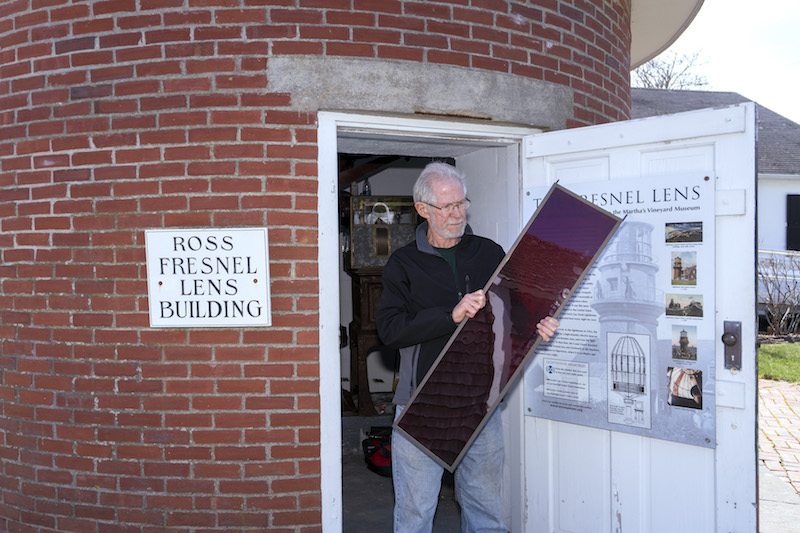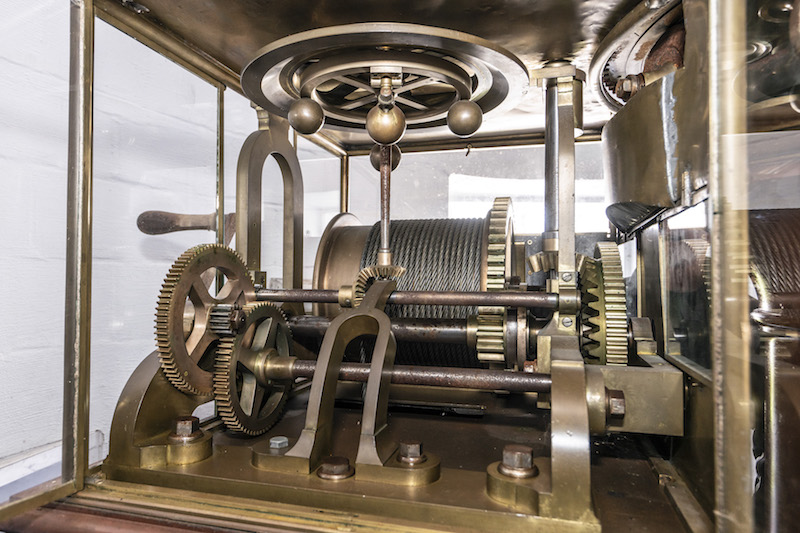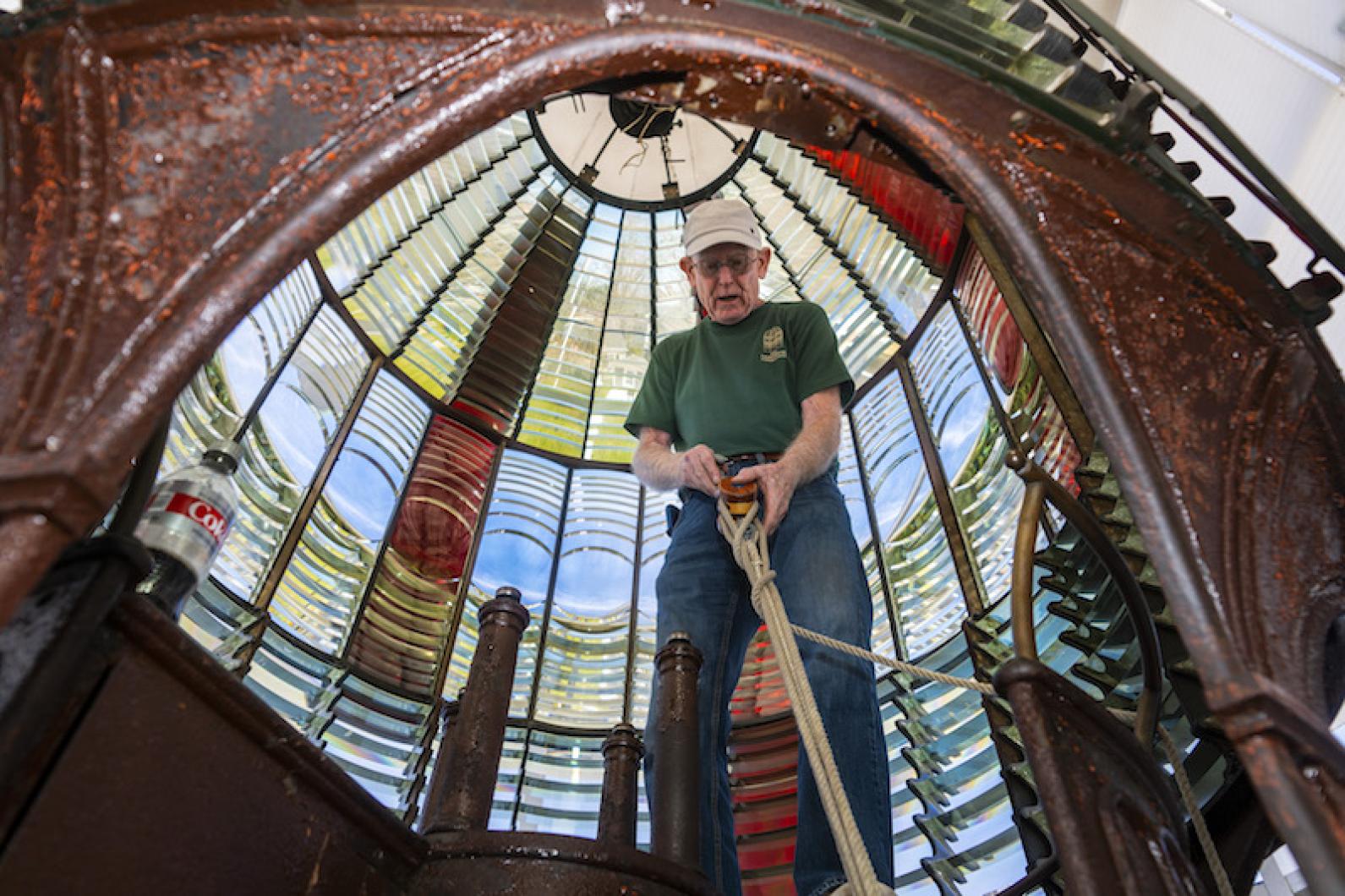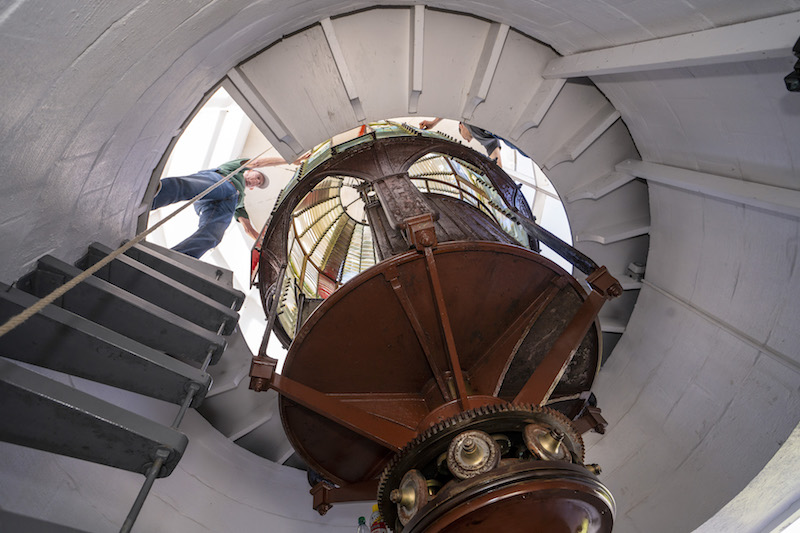The last thing Jim Woodward can afford to do in his line of work as a lampist, is drop something.
Mr. Woodward, one of five such specialists left in the United States, is in charge of moving the Fresnel lens which once sat atop the Gay Head Lighthouse from the Martha’s Vineyard Museum’s present location in Edgartown to its new home in Vineyard Haven.
“This is an optical quality glass,” Mr. Woodward said during a short break from his work. “The formulation that the French used to make this glass, you use these materials that make the glass extremely brittle. You look at this glass wrong and it will crack or chip. You really have to be extremely careful around it.”

The lens, named after its inventor Augustin Fresnel, first began guiding ships through the tricky shoals of Vineyard Sound in 1856. It was replaced by an electronic beacon in 1952. The two ton assembly was the technological marvel of its day, with hundreds of precisely focused prisms mounted in brass racks. The prisms could reflect and refract the light from one oil lamp into a beam visible 20 miles away at sea.
Mr. Woodward is spending about two weeks on the Vineyard, away from his home in Green Valley, Ariz., as part of the project to move the light.
On Friday, he and his crew had finished removing all of the lenses, and were lowering the rest of the assembly by pulley to the floor of the small display building on the museum grounds.
Mr. Woodward worked with the U.S. Coast Guard for 40 years repairing and restoring these kinds of Fresnel lenses. He said he feels very fortunate to continue his work for museum and historical organizations around the country.
“It’s very much a puzzle,” Mr. Woodward said. “Luckily, we know how the puzzle pieces fit together, and come apart. That’s the trick to it all.”
He said the lens is in phenomenal condition, but will need some stabilization to insure it lasts for generations to come.
The individual lenses are fixed into their brass frames with putty. Stabilizing the putty is done with hypodermic needles, with a special resin known in the museum world as B-72, used in restoration of glass and ceramic objects.
Of all the museum artifacts she has to move, chief curator Bonnie Stacey says this is the biggest project.

“This is the most complex,” Ms. Stacey said. “It’s huge, and it has a whole bunch of pieces. We’ve been planning it for a really long time.”
The museum received federal grants from the National Endowment for the Humanities and the Institute of Museum and Library Services to finance part of the cost of the move and restoration.
The date of the move will depend on the pace of construction at the new facility in Vineyard Haven, but Ms. Stacey hopes to have the Fresnel lens in place at its new home by this fall. Until then it will be packed and stored in the museum library.








Comments (1)
Comments
Comment policy »